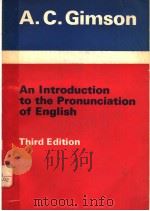《INTRODUCTION TO THE PRACTICE OF STATISTICS THIRD EDITION》
| 作者 | DAVID S.MOORE AND GEORGE P.MCC 编者 |
|---|---|
| 出版 | 未查询到或未知 |
| 参考页数 | |
| 出版时间 | 1999(求助前请核对) 目录预览 |
| ISBN号 | 无 — 求助条款 |
| PDF编号 | 820173878(仅供预览,未存储实际文件) |
| 求助格式 | 扫描PDF(若分多册发行,每次仅能受理1册) |
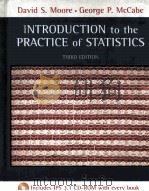
PART Ⅰ: Data1
CHAPTER1Looking at Data-Distributions2
Introduction4
Variables4
1.1 Displaying Distributions with Graphs5
Graphs for categorical variables6
Measuring the speed of light7
Measurement8
Variation9
Stemplots10
Examining distributions13
Histograms14
Looking at data17
Time plots18
Beyond the basics: decomposing time series21
Section 1.1 Exercises23
1.2 Describing Distributions with Numbers40
Measuring center: the mean41
Measuring center: the median42
Mean versus median43
Measuring spread: the quartiles44
Measuring spread: the interquartile range46
The five-number summary and boxplots47
Comparing distributions50
Measuring spread: the standard deviation51
Properties of the standard deviation53
Choosing measures of center and spread54
Changing the unit of measurement55
Section 1.2 Exercises58
1.3 The Normal Distributions64
Density curves66
Measuring center and spread for density curves68
Normal distributions70
The 68-95-99.7 rule72
Standardizing observations73
The standard normal distribution74
Normal distribution calculations76
Normal quantile plots79
Beyond the basics: density estimation84
Section 1.3 Exercises85
Chapter 1 Exercises93
CHAPTER 2Looking at Data-Relationships102
Introduction104
Getting started104
2.1 Scatterplots106
Interpreting scatterplots107
Adding categorical variables to scatterplots108
More examples of scatterplots109
Beyond the basics: scatterplot smoothers112
Categorical explanatory variables115
Section 2.1 Exercises117
2.2 Correlation126
The correlation r126
Properties of correlation128
Section 2.2 Exercises131
2.3 Least-Squares Regression135
Fitting a line to data137
Prediction137
Least-squares regression139
Interpreting the regression line142
Correlation and regression142
Understanding r 2 145
Section 2.3 Exercises148
2.4 Cautions about Regression and Correlation153
Residuals154
Lurking variables156
Outliers and inuential observations160
Beyond the basics: regression diagnostics163
Beware the lurking variable166
Beware correlations based on averaged data167
The restricted-range problem168
Section 2.4 Exercises169
2.5 An Application: Exponential Growth and WorldOil Production181
The nature of exponential growth181
The logarithm transformation184
Residuals again185
Prediction in the exponential growth model188
Section 2.5 Exercises189
2.6 Relations in Categorical Data193
Marginal distributions194
Describing relationships196
Conditional distributions196
Simpson's paradox199
The perils of aggregation200
Section 2.6 Exercises201
2.7 The Question of Causation207
Explaining association: causation208
Explaining association: common response209
Explaining association: confounding209
Establishing causation210
Section 2.7 Exercises212
Chapter 2 Exercises214
CHAPTER 3Producing Data228
Introduction230
3.1 First Steps230
Where to find data: the libraryand the Internet231
Sampling233
Experiments234
Section 3.1 Exercises235
3.2 Design of Experiments237
Comparative experiments239
Randomization241
Randomized comparative experiments242
How to randomize243
Cautions about experimentation246
Matched pairs design246
Block designs247
Section 3.2 Exercises250
3.3 Sampling Design256
Simple random samples257
Stratified samples258
Multistage samples259
Cautions about sample surveys260
Section 3.3 Exercises262
3.4 Toward Statistical Inference267
Sampling variability268
Sampling distributions269
The bias of a statistic272
The variability of a statistic272
Bias and variability274
Why randomize?275
Beyond the basics: capture-recapture sampling275
Section 3.4 Exercises277
Chapter 3 Exercises281
PART Ⅱ: Probability and Inference287
CHAPTER 4Probability: The Study of Randomness288
4.1 Randomness290
The language of probability290
Thinking about randomness291
The uses of probability292
Section 4.1 Exercises293
4.2 Probability Models295
Sample spaces295
Intuitive probability297
Probability rules298
Assigning probabilities:nite number of outcomes299
Assigning probabilities: equally likely outcomes300
Independence and the multiplication rule301
Applying the probability rules304
Section 4.2 Exercises306
4.3 Random Variables312
Discrete random variables313
Continuous random variables317
Normal distributions as probability distributions320
Section 4.3 Exercises322
4.4 Means and Variances of Random Variables326
The mean of a random variable326
Statistical estimation and the law of large numbers328
Thinking about the law of large numbers331
Beyond the basics: more laws of large numbers333
Rules for means333
The variance of a random variable335
Rules for variances337
Section 4.4 Exercises340
4.5 General Probability Rules346
General addition rules347
Conditional probability350
General multiplication rules353
Tree diagrams354
Bayes's rule355
Independence again356
Decision analysis357
Section 4.5 Exercises359
Chapter 4 Exercises365
CHAPTER 5From Probability to Inference373
Introduction374
5.1 Sampling Distributions for Counts and Proportions375
The binomial distributions for sample counts375
Binomial distributions in statistical sampling377
Finding binomial probabilities: tables378
Binomial mean and standard deviation380
Sample proportions381
Normal approximation for counts and proportions382
The continuity correction386
Binomial formulas387
Section 5.1 Exercises390
5.2 The Sampling Distribution of a Sample Mean397
The mean and standard deviation of x398
The sampling distribution of x400
The central limit theorem401
Beyond the basics: Weibull distributions406
Section 5.2 Exercises408
5.3 Control Charts415
x control charts415
Statistical process control418
Using control charts419
Section 5.3 Exercises422
Chapter 5 Exercises428
CHAPTER 6Introduction to Inference432
Introduction434
6.1 Estimating with Confidence435
Statistical confidence435
Confidence intervals437
Confidence interval for a population mean439
How confidence intervals behave441
Choosing the sample size443
Some cautions444
Beyond the basics: the bootstrap445
Section 6.1 Exercises447
6.2 Tests of Significance453
The reasoning of signicance tests453
Stating hypotheses454
Test statistics456
P -values457
Statistical significance458
Tests for a population mean460
Two-sided significance tests and confidence intervals463
P -values versus fixed a466
Section 6.2 Exercises468
6.3 Use and Abuse of Tests475
Choosing a level of significance476
What statistical significance doesn't mean477
Don't ignore lack of significance478
Statistical inference is not valid for all sets of data479
Beware of searching for significance479
Section 6.3 Exercises481
6.4 Power and Inference as a Decision483
Power483
Increasing the power486
Inference as decision488
Two types of error488
Error probabilities490
The common practice of testing hypotheses492
Section 6.4 Exercises493
Chapter 6 Exercises496
CHAPTER 7Inference for Distributions502
7.1 Inference for the Mean of a Population504
The t distributions504
The one-sample t condence interval505
The one-sample t test507
Matched pairs t procedures513
Robustness of the t procedures515
The power of the t test517
Inference for nonnormal populations518
The sign test519
Section 7.1 Exercises523
7.2 Comparing Two Means537
The two-sample z statistic538
The two-sample t procedures540
The two-sample t signicance test541
The two-sample t condence interval544
Robustness of the two-sample procedures545
Inference for small samples546
Software approximation for the degrees of freedom549
The pooled two-sample t procedures550
Section 7.2 Exercises556
7.3 Optional Topics in Comparing Distributions566
Inference for population spread566
The F test for equality of spread567
Robustness of normal inference procedures570
The power of the two-sample t -test570
Section 7.3 Exercises573
Chapter 7 Exercises575
CHAPTER 8Inference for Proportions584
8.1 Inference for a Single Proportion586
Condence interval for a single proportion586
Significance test for a single proportion588
Confidence intervals provide additional information591
Choosing a sample size592
Section 8.1 Exercises596
8.2 Comparing Two Proportions601
Confidence intervals602
Significance tests604
Beyond the basics: relative risk607
Section 8.2 Exercises609
Chapter 8 Exercises615
PART Ⅲ: Topics in Inference621
CHAPTER 9Inference for Two-Way Tables622
9.1 Inference for Two-Way Tables624
The two-way table624
Describing relations in two-way tables626
The hypothesis: no association628
Expected cell counts629
The chi-square test629
The chi-square test and the z test632
Beyond the basics: meta-analysis632
9.2 Formulas and Models for Two-Way Tables634
Computations634
Computing conditional distributions635
Computing expected cell counts637
Computing the chi-square statistic638
Models for two-way tables639
Comparing several populations: the first model640
Testing independence: the second model641
Concluding remarks642
chapter9 Exercses643
CHAPTER 10Inference for Regression660
10.1 Simple Linear Regression662
Statistical model for linear regression662
Data for simple linear regression663
Estimating the regression parameters666
Confidence intervals and signicance tests671
Confidence intervals for mean response673
Prediction intervals676
Beyond the basics: nonlinear regression678
10.2 More Detail about Simple Linear Regression681
Analysis of variance for regression681
The ANOVA F684
Calculations for regression inference686
Preliminary calculations687
Inference for slope and intercept688
Confidence intervals for the mean response and predictionintervals for a future observation690
Inference for correlation691
chapter10Exercises695
CHAPTER 11Multiple Regression710
Population multiple regression equation712
Data for multiple regression713
Multiple linear regression model713
Estimation of the multiple regression parameters714
Confidence intervals and significance tests for regressioncoeficients715
ANOVA table for multiple regression717
Squared multiple correlation R 2718
A case study: preliminary analysis719
Relationships between pairs of variables721
Regression on high school grades722
Interpretation of results723
Residuals724
Refining the model724
Regression on SAT scores726
Regression using all variables726
Test for a collection of regression coefficients728
Beyond the basics: multiple logistic regression730
Chapter 11 Exercises732
CHAPTER 12One-Way Analysis of Variance742
Data for a one-way ANOVA744
Comparing means745
The two-sample t statistic747
ANOVA hypotheses747
The ANOVA model750
Estimates of population parameters751
Testing hypotheses in one-way ANOVA753
The ANOVA table757
The F test759
Contrasts762
Multiple comparisons769
Software773
Power775
Chapter 12 Exercises779
CHAPTER 13Two-Way Analysis of Variance798
Advantages of two-way ANOVA800
The two-way ANOVA model803
Main effects and interactions804
The ANOVA table for two-way ANOVA809
Chapter 13 Exercises815
1999《INTRODUCTION TO THE PRACTICE OF STATISTICS THIRD EDITION》由于是年代较久的资料都绝版了,几乎不可能购买到实物。如果大家为了学习确实需要,可向博主求助其电子版PDF文件。对合法合规的求助,我会当即受理并将下载地址发送给你。
高度相关资料
-

- AN INTRODUCTION TO THE THEORY OF NUMBERS THIRD EDITION
- 1954 OXFORD AT THE CLARENDON PRESS
-
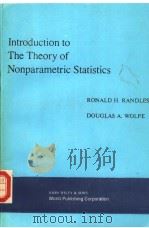
- INTRODUCTION TO THE THEORY OF NONPARAMETRIC STATISTICS
- WORLD PUBLISHING CORPORATION
-
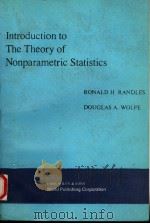
- INTRODUCTION TO THE THEORY OF NONPARAMETRIC STATISTICS
- 1979年 JOHN WILEY AND SONS
-

- AN INTRODUCTION TO THE PRONUNCIATION OF ENGLISH THIRD EDITION
- 1980 Edward Arnold
-

- THE SOCIOLOGICAL METHOD:AN INTRODUCTION TO THE SCIENCE OF SOCIOLOGY THIRD EDITION
- 1980 HOUGHTON MIFFLIN COMPANY
-
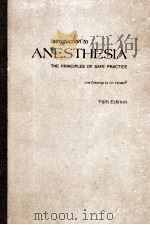
- INTRODUCTION TO ANESTHESIA THE PRINCIPLES OF SAFE PRACTICE FIFTH EDITION
- 1977 W.B.SAUNDERS COMPANY
-

- AN INTRODUCTION TO THE HISTORY OF PSYCHOLOGY THIRD EDITION
- 1997 BROOKS/COLE PUBLISHING COMPANY
-

- THE PRACTICE OF WRITING THIRD EDITION
- 1989 ST.MARTIN'S PRESS
-
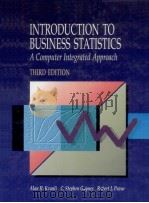
- INTRODUCTION TO BUSINESS STATISTICS A COMPUTER INTEGRATED APPROACH THIRD EDITION
- 1992 WEST PUBLISHING COMPANY
-
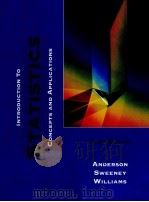
- INTRODUCTION TO STATISTICS CONCEPTS AND APPLICATIONS THIRD EDITION
- 1986 WEST PUBLISHING COMPANY
-

- THE BEDFORD INTRODUCTION TO LITERATURE THIRD EDITION
- 1993 BEDFORD BOOKS OF ST.MARTIN'S PRESS
-
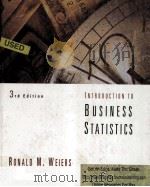
- INTRODUCTION TO BUSINESS STATISTICS THIRD EDITION
- 1998 DUXBURY PRESS
-

- AN INTRODUCTION TO THE HISTORY OF MEDICINE THIRD EDITION
- 1924 W.B. SAUNDERS COMPANY
-
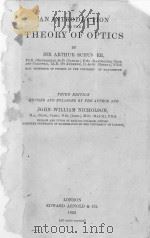
- AN INTRODUCTION TO THE THEORY OF OPTICS THIRD EDITION
- 1924 EDWARD ARNOLD AND CO.
提示:百度云已更名为百度网盘(百度盘),天翼云盘、微盘下载地址……暂未提供。➥ PDF文字可复制化或转WORD
